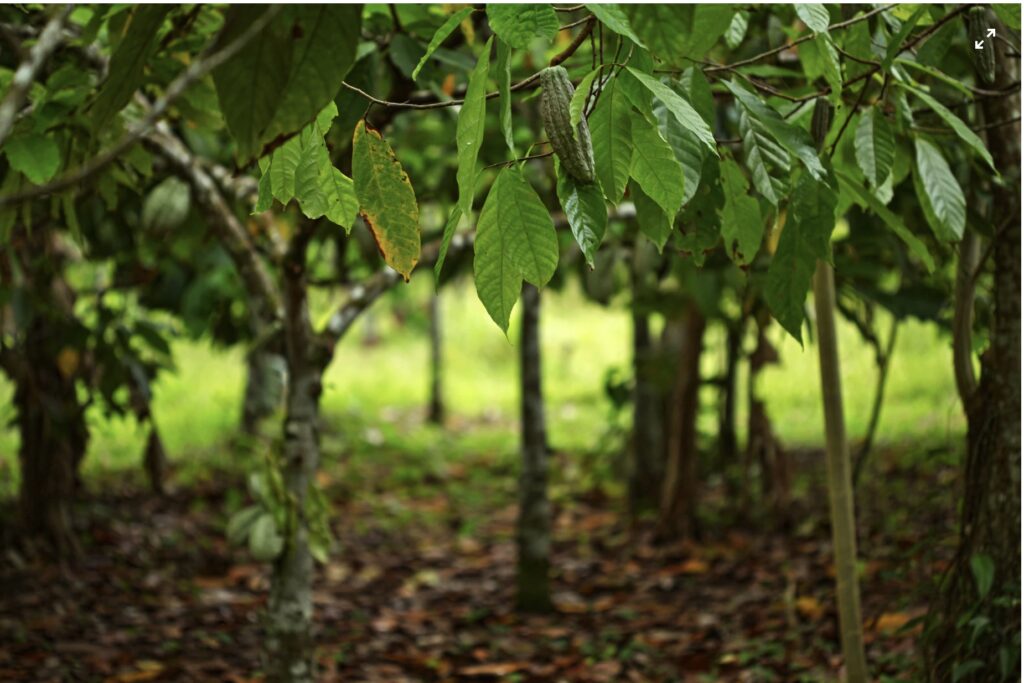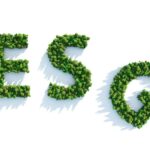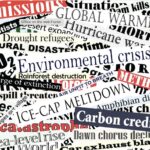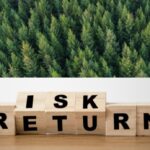Another unofficial series from The ForestLink – things I love that can be related to forests – travel, and now chocolate! In my last article, I discussed how tourism companies can improve their carbon impact and benefit from rising carbon markets. In this article I shine the light on the cocoa sector.

What started out as a review of Ferrero’s recently published sustainability report, turned into an opportunity segment on a term becoming more widely known in forest-linked supply chains of insetting.
This article summarizes my review of Ferrero’s sustainability report, and draws some reflections as to how they could bring together the positive elements of their work into an Insetting Strategy, and unlock even more value and impact.
Snapshot of the Challenges faced by the Cocoa Industry
A significant challenge with cocoa cultivation, is deforestation risk (this doesn’t even consider oil palm cultivation, an important additive in the cocoa sector). Further, as far as food commodities go, the chocolate supply chain has the third highest GHG emissions footprint, after beef/lamb and cheese (Our World in Data, 2020). Where the most of this footprint is in the form of land use change.
Probably the most challenging element in the cocoa value chain is the fact that 65% of the world’s cocoa is cultivated in Ivory Coast and Ghana by about 2 million mainly smallholder farmers. These farmers are often living below the poverty line where child and forced labour are common.
Review of Fererro’s Sustainability Report
In mid-July, Ferrero published its sustainability report for 2021. For those of you unfamiliar with the Italian family-run company – think Nutella, Kinder Surprise and Ferrero Rocher.
Being the now Italian resident, chocolate loving, sustainability geek that I am – I had a special interest in this report, and this company (whose iconic product is always on my shelf). So, I thought I would read it with my critical eye with the lens of looking at the base of their supply chain – the forest landscapes in which their most key ingredient (cocoa) is cultivated. Below is my friendly review according to some key criteria.
The report goes into details around packaging, sustainable sourcing of other ingredients (including palm oil which also poses serious deforestation risk), health issues, etc. I am not speaking to any of these elements, only to cocoa – from the standpoint of my expertise of sustainability in tropical forest landscapes. Below are listed some evaluation criteria, and in the column to the right a summary of what Ferrero is doing or not in relation to tropical forest landscapes. I have provided my summary to include either positive (+) or negative (-) elements.
| Criteria | What they’re doing (or not) related to forest landscapes |
| Contribution to resilient forest landscapes where cocoa is sourced | + Support supplying farmers to apply agroforestry systems, Quantifiable results reported, – In the section of protecting the environment, there is no focus on landscape interventions (refer to focal areas of energy efficiency, water consumption in production, waste and packaging), + Monitor deforestation-risk through satellite monitoring of at-risk forest areas near their raw material supply |
| Contribution to resilience of farmers where cocoa is sourced | + Support supplying farmers to improve productivity and diversify livelihoods and also support community development, women’s empowerment and children’s rights + Partnership investments in important sourcing geographies (ie. Save the Children Ivory Coast and Ghana, Earthworm in South-East Asia). Quantifiable results reported on the former |
| Raw material sourcing (tropical forest landscape related) | + Strong procurement policies linked to certification – Risk-based sourcing approach – though important, there is a lack of an impact opportunity-based approach. |
| Certification | + RSPO for palm oil, Rainforest Alliance, Fairtrade for cocoa + 3rd party EcoVadis responsible-sourcing platform to assess suppliers across various criteria + Developing internal Commodity Charters, setting out minimum criteria their suppliers must meet |
| Carbon accounting | + Have set science-based commitments for 2030 (SBTi) – None of emission reduction strategies are related to improved land-use (where 62.4% of total carbon footprint is from raw materials – again, think land-use) |
| Sustainability representation at the Board level | – Disappointingly, it was difficult to find information on Ferrero’s executive leadership today. A press release from 2017 identified a new governance set up which is solely composed of men, with no representation for sustainability. Though they have a Sustainability Operative Committee, this does not appear to sit at the top executive level. |
| Specific Elements I like | + Participate in farmer mapping to improve traceability of raw materials + Quantifiable impact programs around agroforestry and socioeconomic improvement + Case study on Kolo Nafaso – giving substance to the policies, and impact program numbers + Michele Ferrero Entrepreneurial Project – supporting the development of social enterprises in developing geographies |
Opportunities through Insetting
On Materiality
In their 2021 Sustainability Report, Ferrero ran a materiality assessment – identifying the sustainability issues that matter most to their stakeholders and their business. Not surprisingly, biodiversity, deforestation prevention and sustainable agriculture ranked the highest among relevance for stakeholders and a bit surprisingly – seventh highest (of 20 identified issues) as relevant for Ferrero’s business (behind Innovation and digitalization and product design, packaging and the circular economy, among others). Climate action ranked fourth as relevant for stakeholders and third as relevant for business. Also, not surprisingly in the cocoa industry, human rights in the supply chain was ranked second highest for stakeholders and the highest for the business.
Addressing Material Risk through Insetting Opportunities
Now, with the initial disclaimer that overall, I was impressed with the work that Ferrero is doing on sustainability – transparency, agroforestry and socioeconomic development, forest at risk monitoring. Each of these seem to address independent elements of Ferrero’s sustainability management. What if there was an integrated approach to addressing social, climate and environmental elements under one umbrella, where both risks are mitigated, and impact opportunities are leveraged? Think back to that huge carbon footprint of 62.4% from raw materials, that is not being managed (or at least accounted for) under Ferrero’s climate initiatives.
This is where there is an opportunity for insetting. In a recent article by the World Economic Forum, the difference between offsetting and insetting is described. Where carbon ‘insetting’ focuses on doing ‘more good’ rather than doing ‘less bad’ within one’s value chain.
“With the aim of slashing GHG emissions from one’s own supply chain, insetting is the implementation of nature-based solutions such as reforestation, agroforestry, renewable energy and regenerative agriculture. Some insetting activities also improve the livelihoods of indigenous communities as a result.”
For Ferrero, this would look at measuring the carbon impact of what they are doing in these agroforestry programs, it would perhaps require more active investment in forest conservation in deforestation fronts in regions they source from. I believe that Ferrero is leaving incredible value on the table by not quantifying the climate impacts of the incredible work they are already doing on land use. When they do this, they might also realize they might need to adjust their focus. The goal should be maximum value for business, maximum impact for environment, climate and society, and minimum risk.
Maximize value, impact, and reduce risk in your own supply chain
If what I’ve written in this article resonates with you – perhaps your business is exposed to deforestation risk and human rights issues and you’re struggling with the right strategy that increases business value, generates quantifiable impact on the ground at the base of your supply chain, and reduces overall business risk, please reach out for a discovery call to see where The ForestLink can help.




